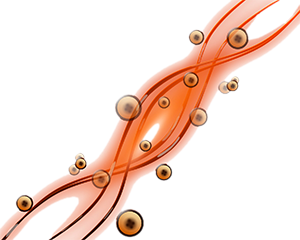Display technologies such as antibody phage display have revolutionized the way biopolymer ligands are isolated from large libraries of polypetides against virtually any target protein of interest.
The breakthrough relies on the physical linkage between the potential binding unit (“phenotype”) and the corresponding genetic information (“genotype”) that codes for it (see Figure 1a).
Simultaneously applying the same “selection pressure” to whole library of candidates (“panning”, in resemblance to the gold-miner’s process of washing gravel in a pan to separate out gold from contaminants), washing cycles allow the rapid and facile enrichment of biopolymers with optimal binding properties. Eventually, PCR-amplification and sequencing of the enriched genome information yields to the identification of the selected binding molecules (Figure 2a).

Figure 2: “Selection” and “screening”. a) Large repertoires of bio-macromolecules containing billions of entities can be simultaneously selected by affinity capture against virtually any target protein of choice. After applying selection pressure, non-binders are washed away, while binding compounds are amplified by bacterial infection and identified by DNA-sequencing of the corresponding “genotype”. To improve the binding properties of the enriched candidates, a second-generation (“affinity maturation”) library can be reconstituted from the selected population and used as an input for further rounds of selection. The entire process can be carried out in just a few days. b) A few millions of chemical compounds are discretely “screened” against a target protein. Only protein for which has been develop a biochemical assay can be used in screening campaign. Such strategies (i.e., high-throughput screening) are highly demanding in terms of costs, time and logistics.
In sharp contrast with traditional screening approaches, in which compounds are individually screened (i.e., one molecule at a time) based on specific assay, selection approaches are capable of interrogating billions of “displayed molecules” at once (Figure 2). Therefore, time and costs for selections are, in first order approximation, independent from library size, while screening efforts tend to increase linearly with library size, due to the discrete nature of the required assays.
As these technologies rely native biosynthetic machineries (phages, ribosomes, yeasts, plasmids, etc.), they are only compatible with the display and selection of polypeptides (e.g., antibodies, natural polypetides) and cannot directly be used for the display and selection of small organic molecules.
To fill such gap, DNA-encode chemical library technology emerged as the most promising and fascinating alternative for the synthetic encoding of unnatural “chemotypes” with “DNA-genotypes”, serving as amplifiable identification bar-code (see Figure 1b).

